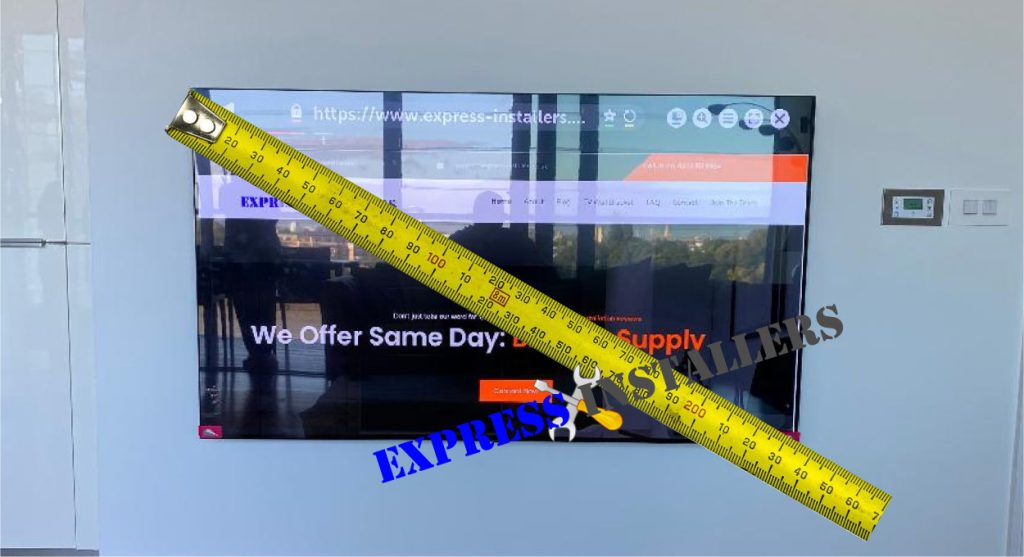
Measuring and reading TV sizes may seem straightforward initially, but essential nuances must be considered. When measuring a TV screen size using a tape measure, it is crucial to focus diagonally from corner to corner.
This diagonal measurement is commonly used to size TVs, with popular options ranging from 32 inches for smaller models to 65 inches or more for larger screens.
Understanding the aspect ratio is critical to effectively deciphering these measurements. A TV’s aspect ratio is the proportional relationship between width and height.
For example, a standard aspect ratio is 16:9, which most modern TVs adhere to for optimal viewing experiences.
By grasping this concept alongside the size measurement, consumers can make more informed decisions when selecting a smart TV that suits their preferences and viewing habits.
Calculating the diagonal length is the method for measuring your TV screen. This measurement provides a quick and easy way to gauge the size of a TV screen, as it represents the distance from one corner of the screen to the opposite corner.
By measuring diagonally, you can get an accurate sense of how extensive your viewing experience will be without worrying about additional dimensions.
Moreover, understanding how to properly measure the screen diagonally can help when upgrading your TV or shopping for a new one. Remember to measure from corner to corner without the bezel for precise diagonal screen measurement.
It allows you to compare different models more effectively based on their viewing area rather than just their width or height measurements.
So, next time you’re in the market for a new TV, remember that knowing how to measure the screen size of your TV diagonally can help you make an informed decision about what size TV to get.
When understanding TV dimensions and finding the optimal viewing distance, it’s crucial to consider the diagonal screen size and resolution.
A giant TV doesn’t necessarily mean better picture quality if you sit too close or far away.
Many experts recommend a simple formula for determining the ideal viewing distance: take the screen size in inches and multiply it by 1.5 to 2.5, resulting in the range (in inches) at which you should sit from your TV for an immersive experience.
Another factor to consider is your TV’s resolution. With higher resolutions like 4K and 8K becoming more popular, a closer seating position can reveal finer details without causing eye strain or pixelation.
Understanding these nuances of TV dimensions and viewing distances can significantly enhance your entertainment experience, ensuring you maximise your investment in home theatre technology.
When mounting a TV, the best height for placement largely depends on the viewing environment and personal preferences.
A standard recommendation is to position the centre of the TV at eye level when seated, which ensures a comfortable viewing experience without straining the neck.
However, factors like room layout and furniture arrangement are crucial when determining how high a TV should be mounted.
If you have a large living room with multiple seating areas, consider mounting the TV slightly higher to ensure visibility from different angles.
On the other hand, in a cosy bedroom setting, a lower placement might be more suitable for relaxed viewing from the bed.
Ultimately, experimenting with different heights before fixing your TV mount can help you find the perfect balance between aesthetics and functionality in your space.
Mon-Fri: 24 Hours
Sat: 24 Hours
Sun: 24 Hours